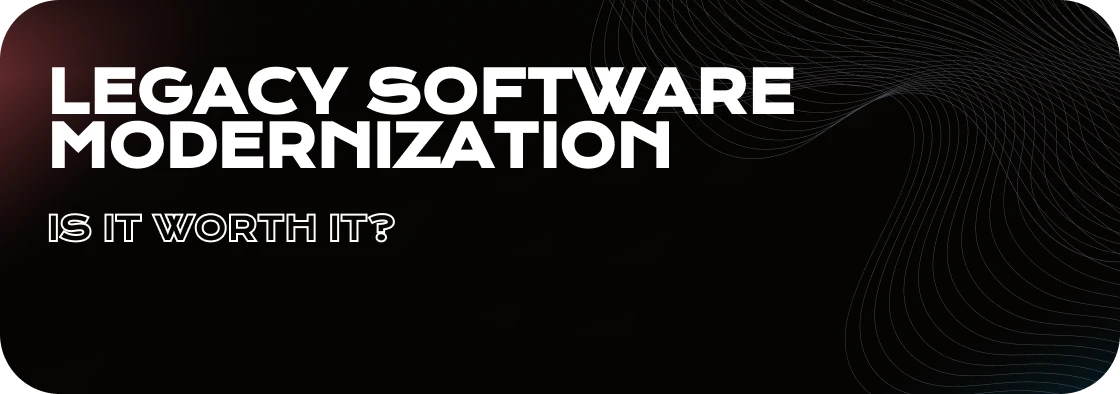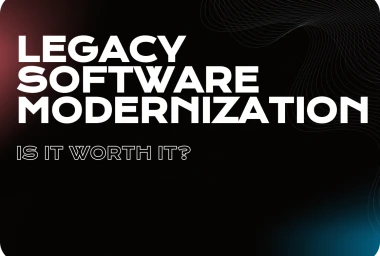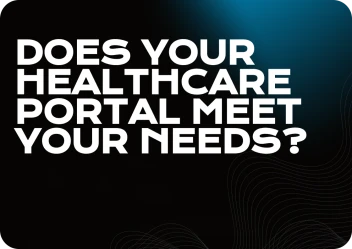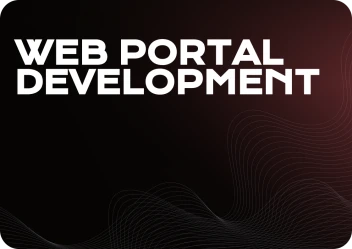Updating a legacy system is a daunting task, but it can provide great value to your business if your present system no longer meets your needs. Continuing to utilize old technologies can result in extra costs and make it more difficult for your company to remain competitive. Switching to a modern solution will be a worthwhile investment in the long term. In this post, we will offer a wise strategy for legacy software modernization that will assist you in defining why, when, and how to modernize legacy systems.
Why Legacy Systems Still Exist?
Do you remember pagers? Depending on your birth date, you either used it or at least heard about such a thing. However, this technology is not as dead as you may think. Pagers continue to be a common communication device in healthcare. There are some countries like Japan and the United Kingdom that discontinued pager services. But in the US, many firms continue to support at least one sort of pager. Aside from being out of date, pager technology is an expensive investment. So, why is it still popular? The explanation is simple: some systems are just difficult to replace, particularly those that manage critical business functions within a company. Pagers are not the only illustration of this phenomenon. Legacy systems are widely used in a variety of different spheres, including banking, finance, insurance and transportation.
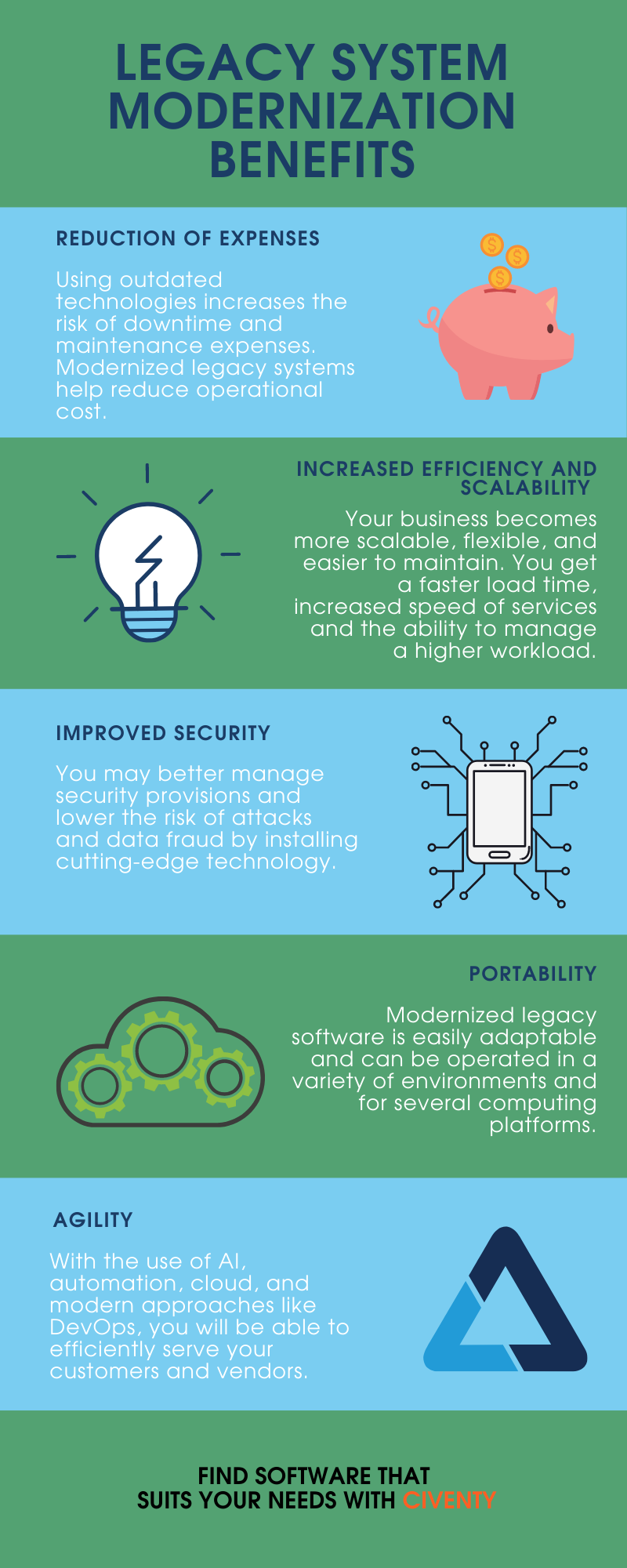
So, your system can be considered legacy if it’s built on obsolete technology but is essential in day-to-day business operations. It shouldn’t be necessarily old. Software may also be labeled legacy due to the lack of support or its inability to suit the demands of a business or organization. Why does it need modernization? Because any legacy system is vulnerable to crashes at any time. Due to its architecture, underlying technology, or design, such software is typically difficult (or impossible) to maintain, support, upgrade, or integrate with new systems.
The necessity of legacy system modernization may not be visible. Why repair something that isn't broken yet? The reason lies in the hidden risks of outdated systems: they are fragile, incompatible with new products, and lack some functionality. It is difficult to find a balance between keeping legacy systems and being able to grow your business and meet the clients’ requirements. In case you need a little more persuasion to upgrade your legacy software system, here is the list of the most important reasons:
5 Reasons Why You Should Modernize Legacy Systems
1) Maintenance gets too expensive
Sometimes the legacy system maintenance may cost you more than the development of new software. Instead of offering new services, you may find yourself in the never-ending handling of outdated codes and solving support issues. If it’s your case, consider software modernization.
2) The lack of experts in this technology on the market
The number of professionals that work with legacy software dwindles with time, making it more difficult and expensive to find someone to assist you. Young specialists tend to learn new languages and are not willing to cope with someone else's legacy code. You may also find yourself in a situation where their legacy system is no longer supported by the vendor.
3) No options for adding new features and integrating with external systems
Adding new features is critical to the progress and success of a business. It helps stay on top of the market and meet customers’ expectations. Adding new features supposes connecting with a third-party product or service, and if you are using a legacy system that is incompatible, it may not function as intended. When new features become difficult to add or outdated software becomes incompatible with new systems, it is a definite indicator that you need legacy web/app modernization.
4) A system has poor security
One of the most essential reasons to consider updating a legacy system is to improve security. What was acceptable in terms of security when the system was designed may not be enough today. Outdated systems cannot compete with the modern ones in terms of vulnerability to cyberattacks and data breaches.
5) A legacy system no longer suits your business needs
Most legacy systems were efficient in the year they were built, but with the fast advancement of technology, they reduce productivity and lead to inefficient process flow. It is impossible to stay up with customers’ needs and be ahead of your competitors without updated apps.
How You Benefit From the Legacy Software Modernization
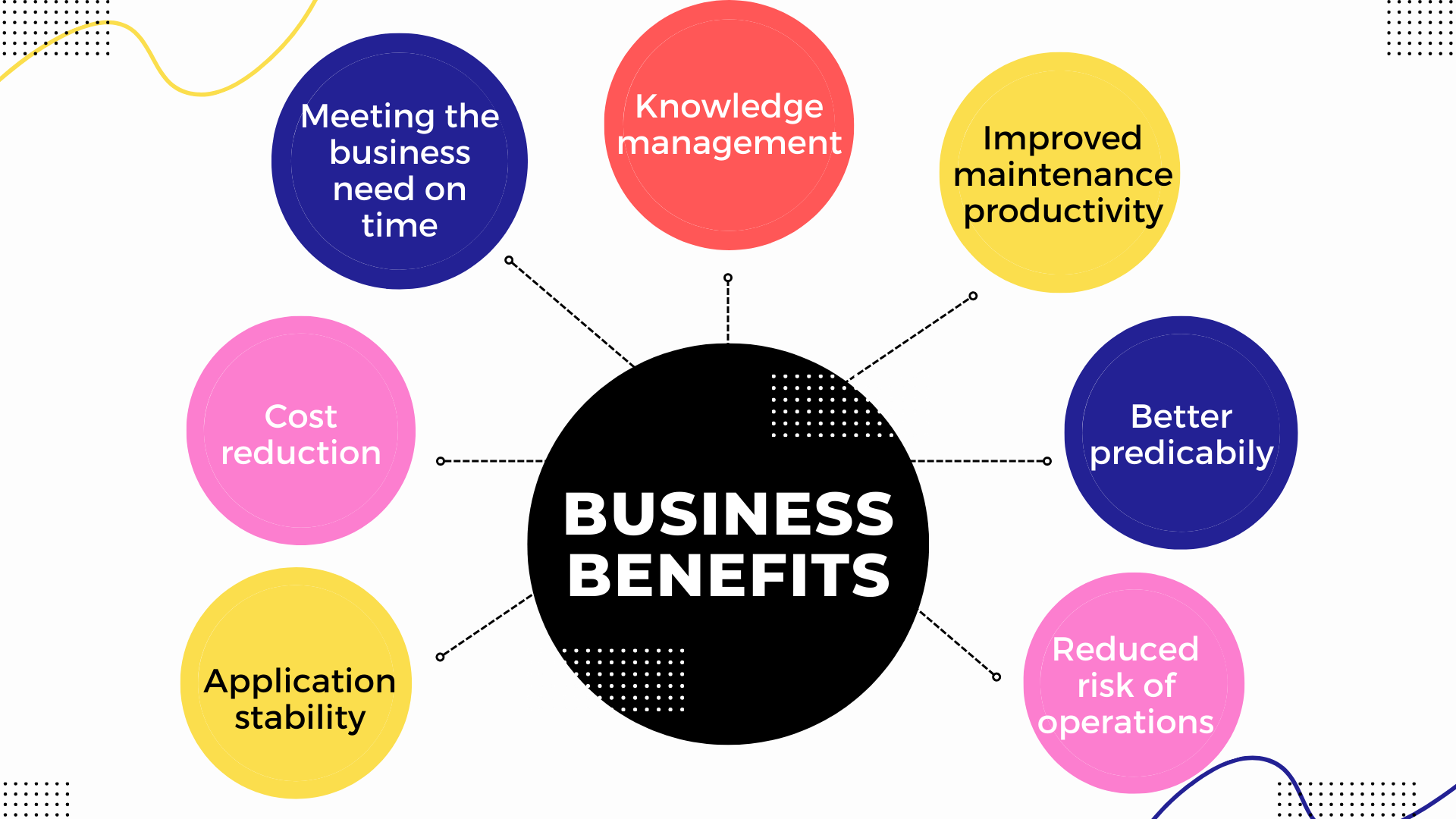
The software does not grow in value or improve with age in the same way that a family heirloom does. Legacy software modernization can retain the best parts of existing systems without the need for major redevelopment by solving performance, flexibility, and user experience issues. Among the most visible benefits you get with software modernization are:
- Reduction of expenses
When you try to maintain an old system, you spend money on handling obsolete codes, identifying errors, paying to developers that specialize in legacy software. Open-source programming languages enable you to re-architect older code in modern systems. You can automate manual code writing and optimize business processes. You don't need to engage highly qualified developers to keep the code up to date. Moreover, when you switch from local data centers to cloud-based solutions, you may save even more money. Cloud-based data solutions provide more scalable and controllable services at lower costs.
- Increased operational efficiency and scalability
Upgraded apps help provide more effective services to your customers and partners. Legacy app modernization means improved code, well-managed databases, more adaptable programs, and serviceable systems. Web-based technologies enable your staff to operate in real time from any location. With completely transparent and interconnected architecture, it becomes simpler to make plans for the future, create, and deliver new features and services.
- Improved security
The main reason why old systems are so vulnerable to malware attacks is a lack of vendor support. You cannot rely on systems that appeared to be secure five or ten years ago. Legacy system modernization improves security and protection of your important business transactions.
- Portability
Different departments within your business may have distinct requirements. For example, one team may demand greater storage space, while another one may need faster processing. Modernized legacy software is easily adaptable and can be operated in a variety of environments and for several computing platforms. With portable modules, you can manage resources more effectively and obtain better outcomes.
- Becoming more agile
Build and release quickly — this is how applications are delivered today. The ever-changing requirements of consumers, fierce rivalry, and on-demand economy make agility a necessary factor for growth. With the use of Artificial Intelligence, automation, cloud, and modern approaches like DevOps, you will be able to efficiently serve your customers and vendors, and unlock new business opportunities.
Legacy System Modernization Approaches
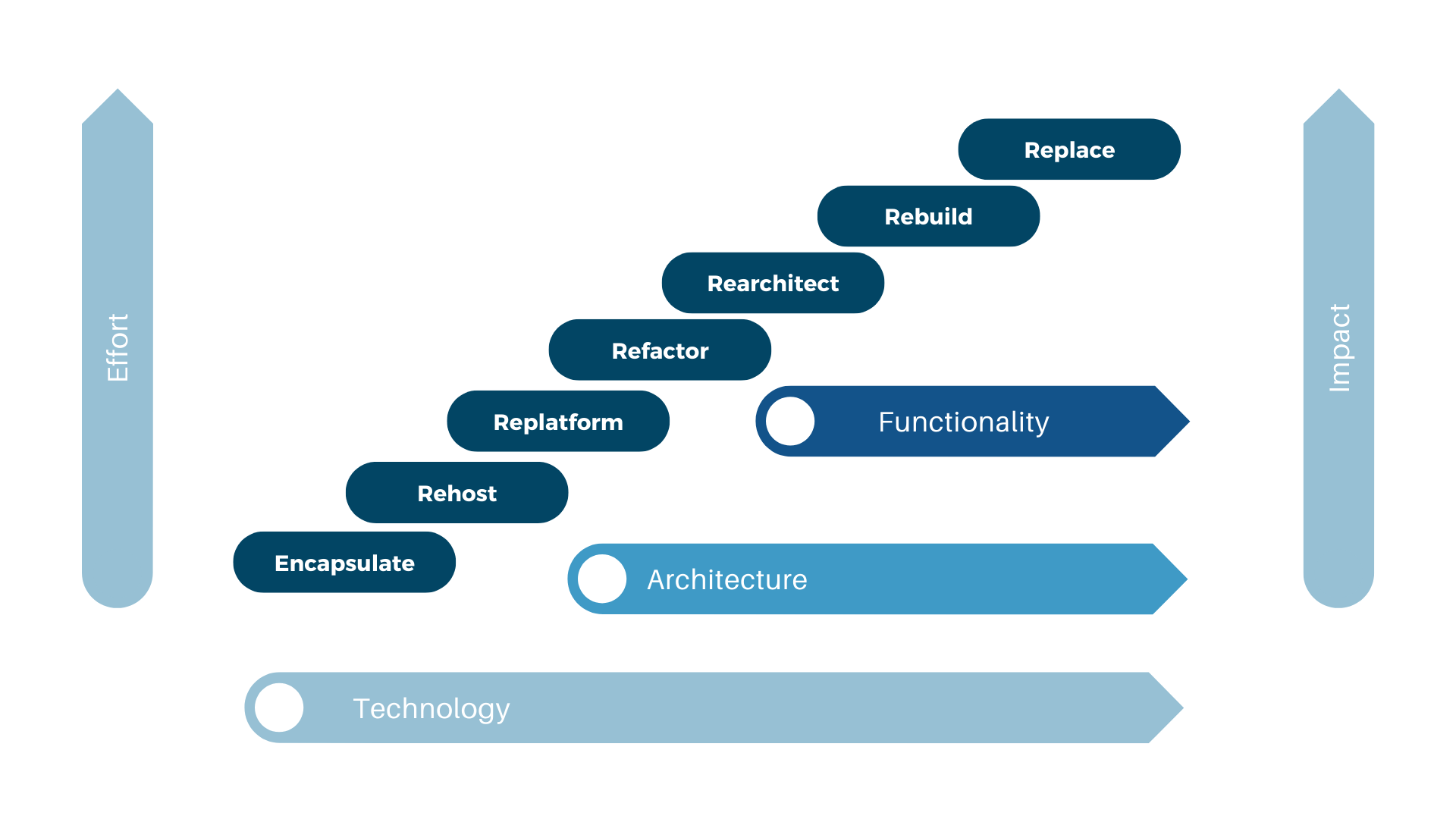
Our Tips For Modernizing Legacy Software
Basically, there are two ways to modernize legacy systems. Revolutionary, when the legacy system is gradually substituted by the new one. This method is risky and may cause disruptions to the usual flow of operations. It may also be more costly. And evolutionary - the way that doesn’t require system downtime. It supposes changing one component at a time without interfering with other business procedures. This legacy modernization method is less inconvenient and risky, but it can take a long time.
Once you've selected the path you want to go, you may choose one of the approaches we rate below from the easiest and lowest risk to those having the biggest influence on the system and business processes:
- Encapsulating
Instead of rewriting certain parts of a code, we upgrade your legacy system by encapsulating its data and functionalities and making them accessible through an API. This method is one of the most cost-effective and time-efficient. Simply put, encapsulating only adds a new interface to the existing old system and doesn’t address maintenance difficulties. It can be a good option for legacy software with well-written code.
- Rehosting
In this case, we move your software to a different physical, virtual, or cloud environment without modifying the code or functionality. This legacy system replacement strategy is also one of the most cost-effective, quick, and low-risk, and can help solve support difficulties. It has no negative effects on the business, and the system continues to work normally at the end of the procedure.
- Platform Migration
During re-platforming, we transfer legacy software to a new platform without code and functionality modifications. This option is ideal for business owners who are concerned that their clients would fail to adapt to a new system. The legacy software cloud migration reduces expenses while providing basic cloud capabilities.
- Code Re-factoring
This approach supposes optimization of the code architecture, correction of bugs without changing the system’s functionality. Making adjustments to the backend parts to facilitate seamless legacy migration to the cloud is what refactoring entails. It enables you to fully utilize cloud-native capabilities and microservices. This method is used to enhance performance and make the system more secure.
- Re-architecting
It involves the creation of new architecture as well as modifications to the code. It's a risky strategy, but it greatly enhances app functionality enabling greater use of a new tech stack's capabilities and introducing new features. Re-architecting is also used to address performance and security issues.
- Complete Re-engineering
If all the above-mentioned options are too expensive and will not accomplish the desired result, then the legacy system may not be worth saving. In such a case, we recommend you replace the app entirely and develop a new product using modern technologies and platforms resulting in a system that better serves the current business needs. Replacing an existing system with brand new, custom-built software takes considerable time and planning, but it is a winning way in terms of perfectly meeting your business goals.
Takeaway
Legacy systems rely on obsolete technologies and are crucial for the company’s operations. Their sole benefit is that they keep the business running smoothly and without interruptions. However, they fail to fulfill market demands. They are frequently expensive and difficult to maintain. In order to make changes within the business, legacy software modernization should be implemented to digitally turn the system into the modern infrastructure. Our specialists at Covent IT can assist you in selecting the best legacy modernization approach for your company and redefining it with the most recent IT trends and technologies.

